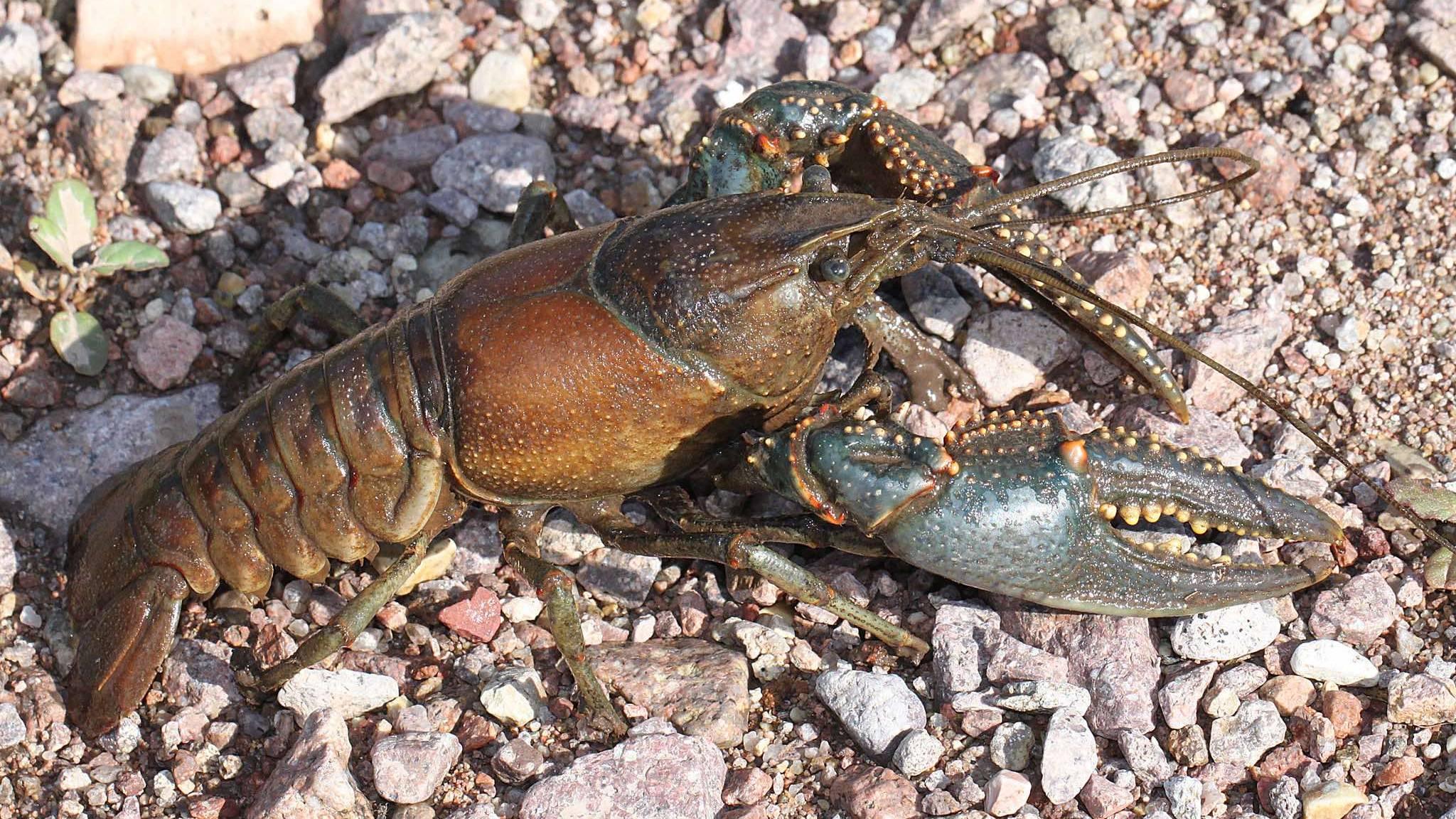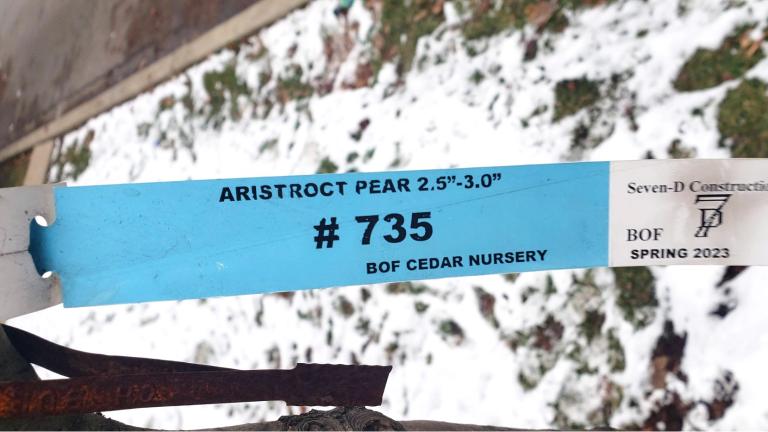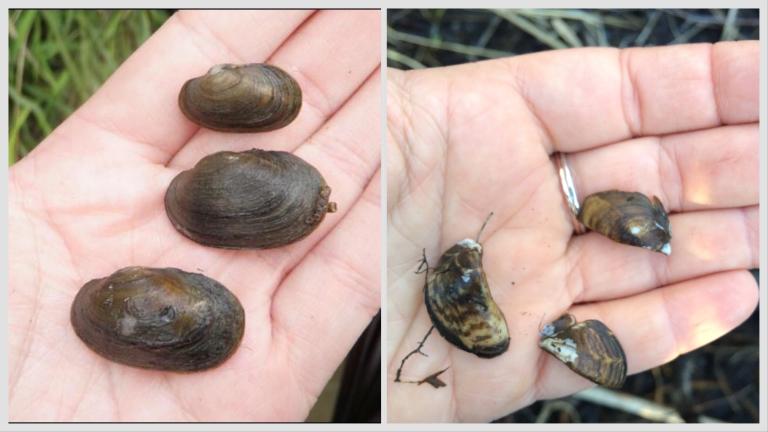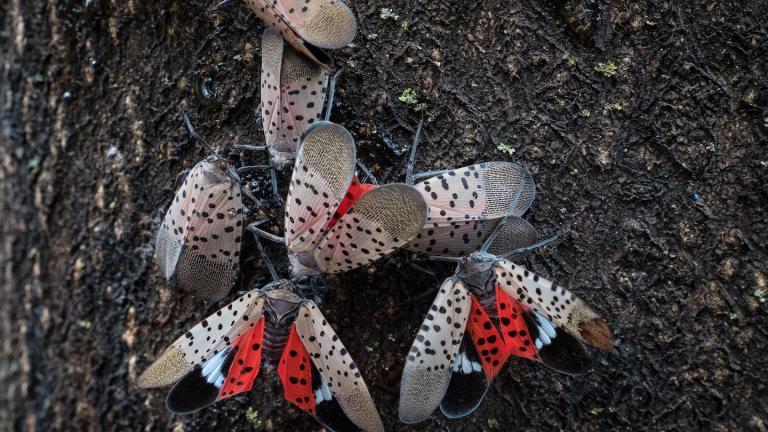 Can you tell them apart? That’s rusty crayfish, left, and virile crayfish, right. (Credit: Flickr Creative Commons)
Can you tell them apart? That’s rusty crayfish, left, and virile crayfish, right. (Credit: Flickr Creative Commons)
In honor of National Invasive Species Awareness Week, we’re posting daily “dupes” — invasives that can easily be confused with native species.
In Part One, we looked at native thistle versus invasive teasel.
Now we’re tackling crayfish, lobster-like freshwater creatures.
Also known as crawfish, crawdads, mudbug or yabbies, these crustaceans are considered a “keystone” species — necessary for and an indicator of the overall health of an ecosystem. The vast majority make their home in North American streams, ponds, lakes, swamps and other wetlands.
One of their quirks is the ability to escape capture by self-amputating a leg or claw when caught, and the appendage will eventually regenerate. You’d think this would make crayfish invincible but, according to estimates, between 30% and 50% of the more than 500 species worldwide are in danger of extinction.
Why? Apart from habitat destruction, crayfish are often their own worst enemy, with non-natives causing the decline of natives.
Exhibit A: the virile crayfish (aka, northern crayfish) vs. the rusty crayfish.
So which one is native and which one is invasive? Both. Both are native and both are invasive.
How is that possible?
Let’s start with the virile crayfish (Faxonius virilis).
 The virile crayfish (aka, northern crayfish) is native to Illinois. (Flickr Creative Commons)
The virile crayfish (aka, northern crayfish) is native to Illinois. (Flickr Creative Commons)
The virile crayfish is the most common species found in Illinois. Its broad range stretches from Canada to New England to western Montana to Oklahoma and northern Arkansas.
A helpful identifying feature is the whitish-yellowish knobs on its pincers. It’s also quite large, for a crayfish, reaching five inches or more.
Outside of its home range, though, in places on the East and West coasts where this Illinois native is a non-native, it’s a nuisance and a threat. By reaching maturity sooner and reproducing more prolifically, the virile crayfish is outcompeting the shasta crayfish in places like California, where the shasta is native.
Ironically, on its home turf, the virile crayfish is under siege itself by a non-native.
And that brings us to the rusty crayfish (Orconectes rusticus), a native to the Ohio River basin — but not the Great Lakes — that arrived in the Chicago region after being used as fishing bait.
 The rusty crayfish is native to the Ohio River basin. (Flickr Creative Commons)
The rusty crayfish is native to the Ohio River basin. (Flickr Creative Commons)
Even with seeming advantages in size and numbers, the virile crayfish is no match for the aggressive rusty crayfish, which spooks the virile and other natives from their hiding places, making them more vulnerable to predators.
Rusty crayfish are also voracious feeders, mowing down vegetation that other aquatic species use for shelter or nesting. The rusty crayfish was actually introduced into some systems to control nuisance weeds, just one of many instances in which attempts to solve one invasive problem creates another.
Illinois law now bans the sale and possession of the rusty crayfish.
To report an invasive species sighting send an email to [email protected]. Provide the following details: Location (GPS coordinates, address, crossroads, town — the more info the better), date, your name and contact information, and attach photographs.
Next up in the series: roses.
Contact Patty Wetli: @pattywetli | (773) 509-5623 | [email protected]








